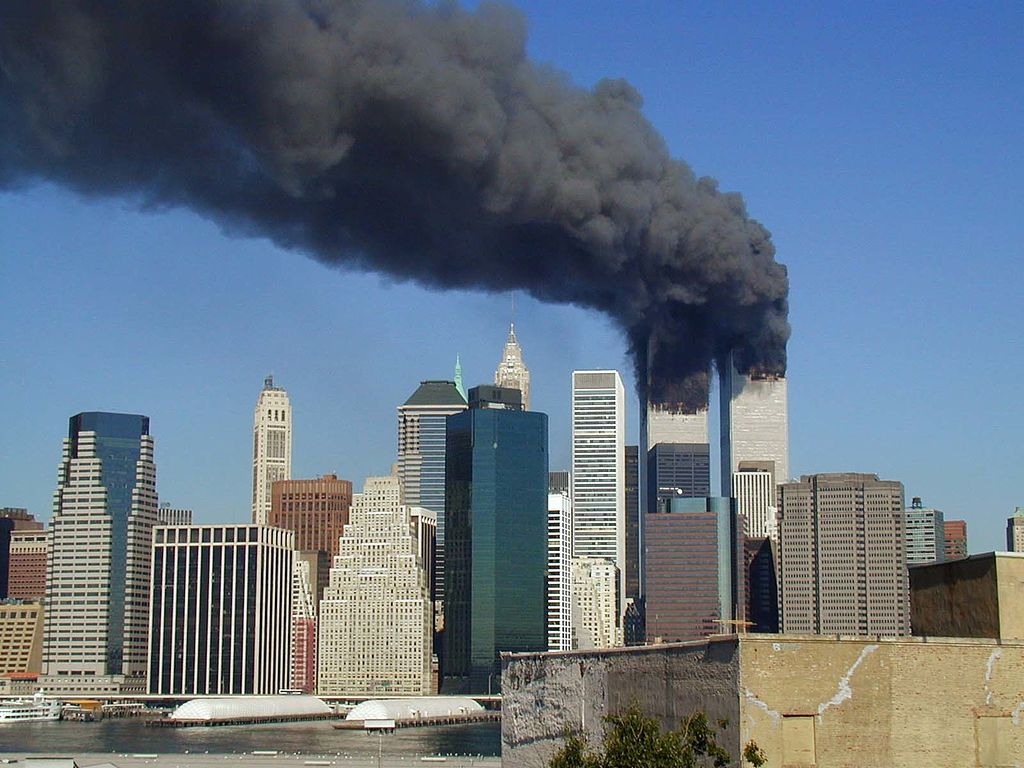
Though it has been 16 years, Americans who lived through the September 11, 2001 terrorist attacks remember the events of the tragic day vividly. Early that morning, 19 members of the Islamic extremist organization Al Qaeda, split into four teams, each with an experienced pilot, and hijacked four commercial flights — United Flight 93 from New Jersey, American Flight 77 from Washington DC, as well as United Flight 175 and American Flight 11 from Boston.
The airplanes, selected because they were heading across the country, either to Los Angeles or San Francisco, had enough fuel to allow the terrorists to inflict maximum damage. Though the passengers realized there were hijackers on board shortly after take off, people on the ground remained blissfully unaware that anything was amiss. That changed at 8:46 a.m. (EST) when American Flight 11 was observed flying straight towards New York City’s tallest structures — the World Trade Center’s “Twin Towers.” Before anyone had time to react, it rammed into the 1,362-feet (415-meter) high North Tower, creating a gaping hole from the 93rd to the 99th floor. The shocking crash was initially believed to be the result of a pilot error or an airplane malfunction.

However, when United Flight 175 did the same to the South Twin Tower at 9:03 a.m. EST, destroying nine floors, it was obvious that there was more to the “accidents.” As experts scrambled to make sense of what had just occurred, American Flight 77 hit the Pentagon. Shortly after, the fourth hijacked airplane, United Flight 93, was reported crash-landing in an empty field on the outskirts of Shanksville, Pennsylvania. By now, it was evident that the country had just suffered a series of well-orchestrated terrorist attacks.
Meanwhile in New York, firefighters, paramedics, and police officers rushed to evacuate the buildings and assist the injured. Though they managed to help the estimated 16,000 to 18,000 people still in the buildings to leave, many of the brave first responders did not make it out alive. That’s because the fires created by the well-fueled airplanes melted the steel support trusses that framed the 110 floors of each building. This, combined with the damage from the initial impact, caused both towers to collapse into a massive heap of cement and steel less than two hours after the airplanes hit the respective buildings. Though the Pentagon building did not suffer the same fate, the impact of the airplane killed 184 people. All in all, 2,977 innocent people from 93 nations lost their lives on that fateful day.

The death toll would have been even higher had United Flight 93 succeeded in reaching its target — the US Capitol building in Washington, DC. However, when New Jersey resident Jeremy Glick called his wife to let her know that his flight had been hijacked, he heard about the two other planes that had hit the World Trade Center. Determined not to let the terrorists use the flight as a bomb, the brave 31-year-old called again a few minutes later to inform her that the passengers and crew were uniting to try to overpower the hijackers. Shortly after, the plane was seen meandering across the skies before nose-diving into an abandoned coal field in Shanksville, Pennsylvania. Though all 33 passengers and seven crew members perished, their heroic act saved the country from an even bigger catastrophe.
Following the tragedy, there was much debate about whether to rebuild the “Twin Towers” and the surrounding buildings that had been damaged by the incident, or convert the site into a memorial to the victims of the terrorist attacks. After much deliberation it was decided that both were essential — the former, to show terrorists that Americans cannot be intimidated by cowardly actions, and the latter, to ensure that the innocent lives lost will never be forgotten.

Three structures, including the 1,776-feet tall One World Trade Center, or "Freedom Tower," have already been constructed and four more are in various stages of planning and construction. “Ground Zero” as the area is called, is also home to an elegant memorial which features twin reflecting pools with names of all the victims etched onto the bronze-paneled edges, as well as a National September 11 museum. In Shanksville, a separate memorial honors the 33 passengers and seven crew members of United Flight 93. Visitors to both can view exhibits and artifacts commemorating the 9/11 tragedy and listen to playbacks of messages left by the passengers to their loved ones before the flight crashed.
The September 11 attacks also led to the start of the “Global War on Terrorism,” which continues today. The 16-year conflict in Afghanistan, the longest war in US history, has cost over $700 billion and claimed more than 2,300 American lives. Unfortunately, it has made little difference in stopping Al Qaeda, which has spawned several offshoots, the most deadly one of which is ISIS.
Resources:911memorial.org, Wikipedia,org